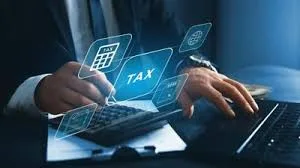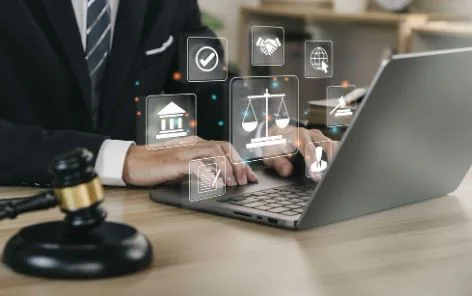First Eithad Rail’s Passenger Train Ride From Dubai to Fujairah taken by the UAE Minister
Table of Contents
- Introduction: The Beginning of a New Rail Era
- Vision Behind Etihad Rail
- The Historic Ride from Dubai to Fujairah
- Passenger Experience and Train Features
- Environmental and Economic Impact
- How Etihad Rail Strengthens National Connectivity
- Challenges and Preparations Before Launch
- The Future of Passenger Rail in the UAE
- FAQ,s
- Conclusion
Introduction: The Beginning of a New Rail Era
This was a historic first in the UAE. The first passenger train was Etihad Rail, which made its inaugural ride from Dubai to Fujairah. This was the beginning of a new era in the country’s transportation history. The event was spearheaded by one of the ministers of the UAE, which symbolizes the nation’s firm belief in innovation, sustainability, and progress.
This first ride was not a simple ceremony ride but a strong statement of how the UAE envisions the creation of one of the most advanced rail systems in the area. Starting as a freight system, Etihad Rail has moved to its passenger stage, opening up the Emirates to faster, safer, and cleaner movement among the Emirates.
The drive along the road between Dubai and Fujairah was accompanied by a feeling of pride and national achievement, which demonstrated the ability of infrastructure projects to be both drivers of economic development and a pathway to unification.
Vision Behind Etihad Rail
The Etihad Rail vision was developed more than 10 years ago as a part of the UAE’s diversification in the economy and a decrease in the reliance on road transportation. The intended goal of the project was to develop a national railway system linking all seven emirates, the most western point being Al Sila off the border, and the most eastern being Fujairah off the coast.
Combining freight and passenger operations, Etihad Rail was included in the vision of the UAE under the name We the UAE 2031, which supports the country’s objectives of sustainable development, technological progress, and carbon emissions mitigation. This was to ensure that inter-emirate traveling is more efficient, economical, and environmentally responsible.
Etihad Rail was also forecasted to be a gateway towards regional collaboration in the future. The network is to be ultimately linked to the bigger Gulf Cooperation Council (GCC) rail project, which will improve trade, tourism, and mobility within the region.
The Historic Ride from Dubai to Fujairah
The inaugural Etihad Rail passenger train journey between Dubai and Fujairah was a esteemed point in the country. The UAE minister headed the test run, which indicates the preparedness of the rail network to embrace the new generation of customers. The minister, together with other officials, engineers, and leaders of the project, boarded the train at Dubai to have a first-hand glimpse of the modern wonder that Etihad Rail has turned out to be.
When the train left, it was traveling across beautiful scenery, the city view of Dubai, and the rugged mountains that open up to the seaside valleys of Fujairah. The ride, the contemporary interiors, and the muffled power of the engines were indications of the technological accuracy and the global standards of infrastructure development in the UAE.
The successful journey, which took place, served as a test of the working capacity of the passenger line and was a prelude to the upcoming operations of the line in the near future. It was a day that brought out national unity, national pride, and the ability of the UAE to transform far-fetched dreams into reality.
Passenger Experience and Train Features
This was the case with the first trip, where the passengers received a preview of what an average traveler could expect when the service is up to full speed. The Etihad Rail passenger train will transform the process of travelling between cities by being comfortable, fast, and luxurious.
All trains are built with convenience for the passengers, including ergonomic seats, air conditioning, digital information screens, and Wi-Fi. The interior design is modern in style, and there are wide cabins that make the interior comfortable and safe at the same time. Such types of travel as economy, business, and first class will be used to serve the needs of different types of passengers, including the everyday commuters and other types of passengers, like tourists and business travelers.
The trains will have a speed of up to 200 kilometers per hour, thus greatly reducing the number of hours taken to travel among the emirates. The Dubai Fujairah trip, which normally takes over two hours by road, will take less than an hour when full operation is in place.
Environmental and Economic Impact
The Etihad Rail is more than convenient; it is a giant stride towards environmental sustainability. The railway is also made to lower the amount of carbon emitted by a large percentage because one train can substitute hundreds of trucks and cars on the road.
The UAE is making a very essential move in ensuring that its long-term sustainability objectives are realized through the encouragement of rail transport over road transport. This is well-suited with the Net Zero 2050 program of the UAE, which focuses on decreasing the carbon footprint of the nation and guaranteeing the existence of greener transportation.
The railway will also boost growth in several economic sectors. It will improve the logistics of the trade, make the transportation cheaper, and invite real estate and tourism investment. The areas in the Dubai- Fujairah route, especially in Sharjah and Ras Al Khaimah, will experience a boom in development as accessibility is enhanced.
How Etihad Rail Strengthens National Connectivity
The geography of the UAE is varied, as it has desert plains, as well as mountain ranges. It is a great engineering achievement to connect these landscapes with the help of an integrated rail system. The Etihad Rail passenger service will connect the largest hubs, such as Abu Dhabi, Dubai, Sharjah, Ras Al Khaimah, and Fujairah to enable the residents to move freely through the country.
Dubai to Fujairah line is specifically strategically important as it links the western and the eastern coasts. The port of Fujairah is among the ports that play a critical role in the UAE as a maritime entry point, and with better accessibility provided by rail, logistics and tourism will improve.
Challenges and Preparations Before Launch
The development of a national railway system is not a task that goes without challenges, and Etihad Rail has endured and been innovative in response. The building of tracks on different landscapes, such as desert sands and mountain tunnels, demanded the state of the art methods.
The railway authority was equally keen on safety and has employed the best signaling and control technology to ensure reliable operations. The construction of the station, training of staff, and preparedness in case of an emergency have been major concerns prior to the full passenger service.
The second step is final tests and certification, and alignment with local transport authorities. The UAE is also making efforts to sensitize the population on the safety of railroads and the need to observe the rights of crossings and tracks.
The Future of Passenger Rail in the UAE
This is just the tip of the iceberg of what will become an extraordinary change in the manner in which individuals will be transported within the Emirates following the first Etihad Rail passenger train ride between Dubai and Fujairah. At its full capacity, the passenger service will serve 11 destinations with an approximate total of 36 million passengers in a year by 2030.
Attachments to neighboring countries in the Gulf will also be a possibility in the future, which will enhance trade and cultural connections in the region. The leaders of the UAE imagine a railway system whose work is not only to be a means of transportation but also a country connecting people, ideas, and opportunities.
Furthermore, domestic tourism is likely to be triggered by the introduction of the rail system. Think about people visiting the picturesque mountains of Fujairah or the beaches of Ras Al Khaimah and making the way there in a couple of hours without getting exhausted after driving long distances.
FAQ,s
When will Etihad Rail passenger services officially begin?
The full passenger services will be introduced soon after full testing, and commercial services will start in the next year.
How long will the journey between Dubai and Fujairah take?
It will take a shorter time of less than one hour, as opposed to more than two hours on the road.
How fast can the trains go?
Etihad Rail passenger trains will have a speed of up to 200 kilometers per hour, and hence some of the fast trains in the area.
What cities will be connected by Etihad Rail?
Major cities in the UAE, such as Abu Dhabi, Dubai, Sharjah, Ras Al Khaimah, and Fujairah, will be connected by the network, with further expansion of the network to the rest of the region.
What benefits will passengers enjoy?
The passengers may enjoy this comfort, safety, speed, and the latest facilities, including Wi-Fi, comfortable seats, and climate-controlled cabins. The environment will also be sustainable through the service by cutting down on emissions.
Conclusion
The first passenger ride of the Etihad Rail in Dubai to Fujairah is a step for the UAE on the path of innovation and sustainability. It features the way in which the country remains at the forefront of intelligent infrastructure and green transport. The historic move is the representation of the advancement, solidarity, and a perspective of the future when all emirates will be united with speed, comfort, and pride.





